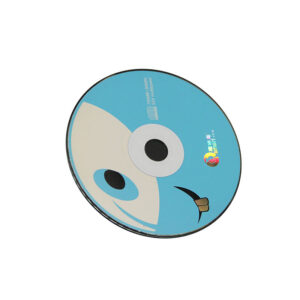Table of Contents
ToggleIntroduction
The exponential growth in technology necessitates a strong emphasis on standardization, crucial for protecting end-users. The technical characteristics and sensitive applications of technological advancements are at the core of this protection. Among these advancements are Near Field Communication (NFC) tags, which operate in the 13.56 MHz frequency band and are pivotal in high-security applications due to their robust data exchange capabilities. These attributes make NFC tags especially suitable for wireless payment systems. Consequently, there is an imperative to regulate communication protocols to ensure universal safety and seamless integration.

Understanding ISO/IEC 15693
ISO/IEC 15693 is a standard set forth to govern proximity tags, particularly those operating at the 13.56 MHz frequency. This frequency is extensively used for Industrial, Scientific, and Medical (ISM) applications on a global scale. The ISO/IEC 15693 standard mandates a maximum read range of 1 meter (approximately 3.3 feet). Additionally, it standardizes the power requirements and communication protocols between the card and the reader device to ensure consistent and uniform implementation across different systems. The standard also specifies the physical dimensions of the cards and the command sets that should be used between cards and readers. Collectively, these criteria form a comprehensive framework, ensuring that any ISO 15693 compliant system functions reliably and securely.
NFC Tags and ISO/IEC 15693 Compliance
NFC technology, operating in the High-Frequency band at 13.56 MHz, must consider compliance with ISO 15693 standards during the design and manufacturing process. Although ISO/IEC 15693 allows a read range of up to 1 meter, typical NFC tags generally operate within a much shorter range, usually around 10 cm. This shorter range is advantageous as it mitigates the risk of eavesdropping, which could otherwise be facilitated by longer read ranges. Even though the operational range differs, NFC technology supports ISO 15693 tags through adherence to the NFC Data Exchange Format (NDEF). NDEF is a standardized data format crucial for ensuring effective communication and data exchange between NFC devices and tags, enhancing their interoperability and security.
ISO/IEC 15693 and Smartphone Compatibility
A critical aspect of NFC technology is not only the transmission of data but also the reception of this data through readers, with smartphones being a primary platform for such interactions. The ability of smartphones to easily and conveniently read NFC tags is a significant factor in the widespread adoption of NFC technology. This compatibility makes NFC an ideal choice for many applications. However, there is no regulatory requirement obligating smartphone manufacturers to support the reading of ISO 15693 compliant tags. This flexibility allows manufacturers to decide whether their devices should support ISO 15693 or not. For applications requiring a read distance beyond the typical NFC range of 10 cm, it is advisable to use ISO 15693 chips. Conversely, for applications operating within a 10 cm range, the ISO 14443 standard for NFC compliant chips is the proper standard to follow, ensuring optimal performance and reliability.
Conclusion: Guaranteeing Secure NFC Applications
The integration of NFC-based technologies is proliferating across various industries, systems, and products, embedding proximity communication into daily operations. The need for security and standardization is paramount for applications such as contactless payments, unique identification, information exchange, and other critical functionalities. ISO/IEC 15693 provides thorough guidelines to ensure the consistent and secure deployment of such technologies, particularly for cards that require operational ranges exceeding 10 cm. As the popularity of RFID and NFC technologies continues to grow, similar standardizations will become increasingly necessary to maintain security and interoperability. Therefore, manufacturers must ensure that their system designs are compliant with these essential standards, guaranteeing safety, efficiency, and reliability for end-users. Through adherence to these standards, the implementation of advanced technologies like NFC can be achieved securely and effectively, fostering trust and adoption among users around the world.
